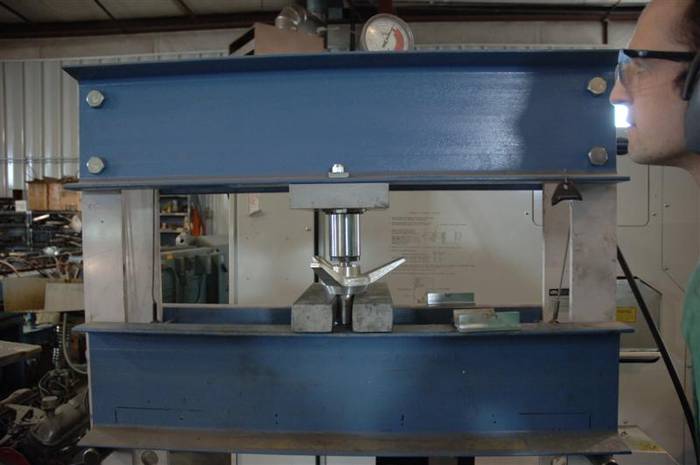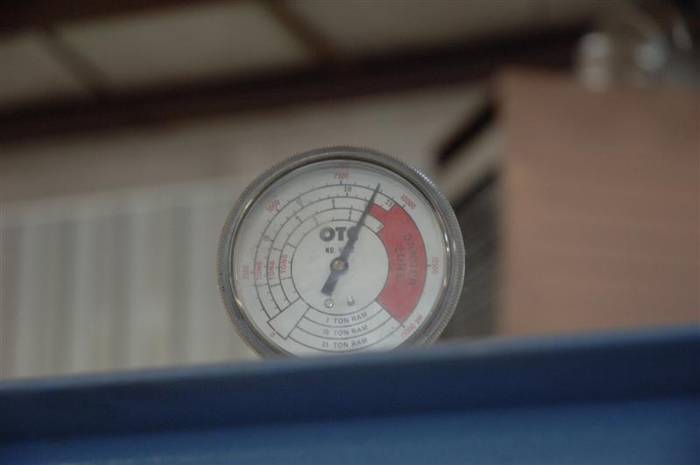Gents,
I do not mean to rain on anyone's parade or seem brash or abrupt when I say the following as I mean no offense to anyone. No one knows everything and we all learn together (at least I hope so). Hopefully I can shed some light on the subject.
I have seen more tequila on this thread than I have in many a thread combined. If any more appears, some politician will figure out how to put a vice tax on it.
When Jamo commented on "centrifugal force" wanting to unscrew the knock offs I decided he must have had an EMPTY bottle of tequila beside him before posting.
In reality, the direction of the threads is
absolutely inconsequential as to whether or not your nuts nut come off!.
It makes NO difference which direction the threads run--right or left on EITHER side of the car.
Wing nuts come off for one reason and one reason only...they are not installed with enough clamping load on the wheel. Now, that said the level of "tightness or clamping load" required certainly varies with myriad reasons that would take me 20 pages to explain. Suffice it to say, an incredible amount of torque is required to develop the proper clamping load if you have sloppy holes in your wheels, your drive pins are under-sized or loose, or the taper on your wing nut-to-wheel interface is wrong as the point contact between the wheel and the nut will yield and then your nuts will be loose. (This is NOT an exhaustive list of all the innumerable things that can go wrong, by the way). On the other hand, NO torque (or clamp) is needed to keep a wing nut on if the wing nut is welded to the hub because it galled (a sad situation I have seen more than once--usually with stainless knock offs--but thankfully not one I have seen for years.)
To some of you, this may seem shocking. "WHAT, the direction of the threads doesn't matter!?", you say! "You must have an entire CASE of empty tequila beside you--along with some "happy weed" to boot to post such a thing! EVERYONE knows I have right hand and left hand nuts for a reason! There MUST be a reason--or, why would they DO it?"
Before you bust out the pitch forks (or more tequila), let me explain. The wheel is not held on by the DIRECTION of the threads per se--but by the clamping load applied BY the threads. The direction the threads run is completely immaterial to the clamping load the threads apply. (Just ask any poor soul who has had some unmentionable body part in a thumb screw if he (or she) asked the senor inquisitioner dude which way the devise was threaded before he "converted" to Christianity.) I am sure you would all agree with me on that. In fact, if you were to press a sleeve onto the hub with NO threads, it would do an equally satisfactory job of retaining the wheel (with the proper clamping press fit, of course). We only use threads for the convenience of being able to take the wheels on and off--hopefully only when we want to--or, for "convincing" people they really should convert.

To give you an idea of how much clamping force threads can (and do) generate, I post the following picture. Notice those huge I beams are BENT



As you can see, we are pressing on the threads (in an attempt to elastically fail the threads in a destructive test) with around 22 tons. Our press ran out of press before our nuts ran out of clamp. The threads were fine after our test as 22 tons was sufficient to convince me of such.
I post the following link so you can see how much standard threads clamp. The diameter of a Cobra hub is about 2.3 inch by the way.
http://www.coxhardware.com/usefulinf.../7_btorque.htm
Now, if you don't belive me (and you shouldn't without going through a careful thought experiment of your own) then think of a harmonic balancer. The harmonic balance is held on with NO threads! It is only held on with the clamping load of the harmonic balancer bolt.
As for the knock off and the wheel rotating at different speeds...I think more tequila has been involved (and quite possibly an enormous amount of happy weed--California medical variety only, of course. If the nut is properly tightened, then it is absolutely IMPOSSIBLE for the wheel and the nut to move at different angular velocities. If you think about it, the furthest out atom on the aluminum of the the rim is moving at a higher circumferential velocity to the very next atom closer to the center of the rim--but there is NO relative movement between them as their ANGULAR VELOCITIES are identical. There couldn't be a difference in "w" (w=omega=angular velocity) as the rim is not tightening or loosening itself together or apart. If the nut is loose, then of course, all bets are off. The wheel can be moving at 2000 rpms and the nut at 0--where in you will very soon be in for a change of underwear.
Another thing to remember is you can brake approximately as fast as you can accelerate in a Cobra (even though we would all like to think otherwise). So, wouldn't braking have just the same detrimental effect on the tightening or loosening of the wing nut as accelerating according to the above "tequila arguments?" So, do we make the threads "self tightening" for braking or for accelerating; or, do we just never use the brakes...

(The choice of some of the guys I have been on the track with

). Remember, an F1 car can decelerate at some 4 g's and they certainly can't accelerate at 4 g's so for the Jamo empty bottle argument F1 should make make the threads REVERSE of what they are on our cars...

Alas, they don't. Some of the sharp guys on this thread may now say, "HEY! don't F1 guys use right and left hand threads!!!! HA!!!! You are BUSTED!!!"
Yes, they do...but why? Well, I have had LONG conversations with Metalore (the maker of almost all F1 and Indy car wheel nuts and hubs) and with the late Carroll Smith...
You know why they do it???
We all finally decided (in my deepest bass voice with a violin under my chin)...
"TRADITION, TRADITION!"
Yes, tradition. You see, that is the way they have always done it; so, that is the way they keep doing it. You see, pit crews don't change regularly and the guy on the right side of the car is trained to put on left-hand threaded nuts and the guy on the left side likes to use his right hand on his nuts. There never was a time for the team to change them--or a reason as right-hand-threads are the same weight as left-hand-threads.
Now, before this post gets too long and some of you run out of tequila, I should mention that temperature and many, many other things contribute to your nuts loosening up. I imagine the above guy has a sloppy wheel on his drive pins--something I have seen WAY too often. If there becomes relative movement because of a LACK of clamp, then who knows what can happen. Bottom line, make sure your nuts are tight! And if you are a Kirkham owner with the push button hubs, drill your hubs and SAFETY WIRE YOUR KNOCK OFFS UNTIL WE CAN FIGURE OUT WHAT IS GOING ON! Remember, if you don't tighten your nuts properly, you just might loose more nuts than you intend to!

Besides, safety wire looks cool.
As Issac Newton said, "The ONLY reason I see further is because we stand on the shoulders of giants."
David



ps. Murphy, your nuts left today!